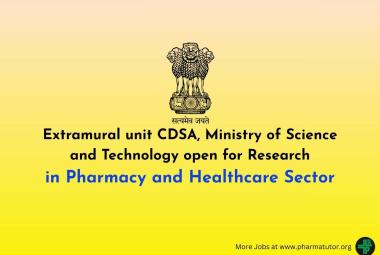Acute Renal Failure
When capacity of kidney function is reduced due to accumulation of waste or toxic material in to blood, is known as acute renal failure. This condition is dominated by rising in serum creatinine concentration or azotemia. (Rise in BUN)
History: Acute Renal Failure was known as uremic poisoning in old era. Uremia means the contamination of the blood with urine. In 1847 this term was used to describe reduced urine output, now known as oliguria.
In 1940, crush victims during the Battle of Britain developed patchy necrosis of renal tubules, leading to a sudden decrease in renal function which term as acute tubular necrosis.
Etiopathogenesis
The causes of Acute renal failure traditionally are divided into 3 main categories: prerenal, intrinsic, and postrenal. The 3 main categories are summarized below.
Prerenal: Prerenal diseases are those which cause sudden decrease in blood flow to the nephron. Functional disorders or depletion in glomerular filtration rate occur due to renal ischemia. It causes reduction in cardiac output and hypovolaemia.
Hypovolemia (decreased blood volume), usually from shock or dehydration and fluid loss or excessive diuretics use, hepatorenal syndrome in which renal perfusion is compromised in liver failure, vascular problems, such as atheroembolic disease and renal vein thrombosis (which can occur as a complication of the nephrotic syndrome), infection usually sepsis, systemic inflammation due to infection can cause prerenal disease.
It can also occur,
- Due to decreased cardiac output
+ Heart failure
+ Pulmonary embolus
+ Acute myocardial infarction
+ Severe valvular disease
+ Abdominal compartment syndrome (tense ascites)
- Due to reduction in body volume
+ Renal losses (diuretics, polyuria)
+ GI losses (vomiting, diarrhea)
+ Cutaneous losses (burns, Stevens-Johnson syndrome)
+ Hemorrhage
+ Pancreatitis
- By dilation of blood vessels
+ Sepsis
+ Anaphylaxis
+ Anesthetics
+ Drug overdose
- By constriction of afferent arteriolar
+ Hypercalcemia
+ Drugs (NSAIDs, amphotericin B, calcineurin inhibitors, norepinephrine, radiocontrast agents)
+ Hepatorenal syndrome
- Efferent arteriolar vasodilation – ACEI or ARB
Renal: It occurs inside the kidney. It include toxins or medication (e.g. some NSAIDs, aminoglycoside antibiotics, iodinated contrast, lithium, phosphate nephropathy due to bowel preparation for colonoscopy with sodium phosphates), rhabdomyolysis (breakdown of muscle tissue) - the resultant release of myoglobin in the blood affects the kidney; it can be caused by injury (especially crush injury and extensive blunt trauma), statins, stimulants and some other drugs. Hemolysis (breakdown of red blood cells) - the hemoglobin damages the tubules; it may be caused by various conditions such as sickle-cell disease, and lupus erythematosus, multiple myeloma, either due to hypercalcemia or "cast nephropathy" (multiple myeloma can also cause chronic renal failure by a different mechanism),acute glomerulonephritis which may be due to a variety of causes, such as anti glomerular basement membrane disease/Goodpasture's syndrome, Wegener's granulomatosis or acute lupus nephritis with systemic lupus erythematosus.
Details of causes for renal desease,
o Changes in extra cellular fluid
+ Drugs (penicillins, cephalosporins, NSAIDs, proton-pump inhibitors, allopurinol, rifampin, indinavir, mesalamine, sulfonamides)
+ Infection (pyelonephritis, viral nephritides)
+ Systemic disease (Sjogren syndrome, sarcoid, lupus, lymphoma, leukemia, tubulonephritis, uveitis)
o Changes in Glomerular
+ Anti–glomerular basement membrane (GBM) disease (Goodpasture syndrome)
+ Anti–neutrophil cytoplasmic antibody-associated glomerulonephritis (ANCA-associated GN) (Wegener granulomatosis, Churg-Strauss syndrome, microscopic polyangiitis)
+ Immune complex GN (lupus, postinfectious, cryoglobulinemia, primary membranoproliferative glomerulonephritis).
o Diseases of Large and small vessel
+ Renal artery obstruction (thrombosis, emboli, dissection, vasculitis)
+ Renal vein obstruction (thrombosis)
+ Microangiopathy (TTP, hemolytic uremic syndrome [HUS], DIC, preeclampsia)
+ Malignant hypertension
+ Scleroderma renal crisis
+ Transplant rejection
+ Atheroembolic disease
o Renal Tubular changes
+ Ischemia
+ Cytotoxic
# Heme pigment (rhabdomyolysis, intravascular hemolysis)
# Crystals (tumor lysis syndrome, seizures, ethylene glycol poisoning, megadose vitamin C, acyclovir, indinavir, methotrexate)
# Drugs (aminoglycosides, lithium, amphotericin B, pentamidine, cisplatin, ifosfamide, radiocontrast agents)
Postrenal: It is characterized by obstruction to the out flow of urine anywhere along the renal tract distal to the opening of the collecting ducts. Medication interfering with normal bladder emptying (e.g. anticholinergics), benign prostatic hypertrophy or prostate cancer, kidney stones, due to abdominal malignancy (e.g. ovarian cancer, colorectal cancer), obstructed urinary catheter can cause postrenal diseases.
o Ureteric obstruction (stone disease, tumor, fibrosis, ligation during pelvic surgery)
o Bladder neck obstruction (benign prostatic hypertrophy [BPH], cancer of the prostate [CA prostate or prostatic CA], neurogenic bladder, tricyclic antidepressants, ganglion blockers, bladder tumor, stone disease, hemorrhage/clot)
o Urethral obstruction (strictures, tumor, phimosis).
Clinical features
- Pre-renal syndrome: If neither glomerulas nor tubules are damaged, it results in to prerenal syndrome. This pattern is seen in marginal ischemia, hypotension, hypovolaemia. Due to depressed blood flow, there is decrease in GFR causing increase in BUN and creatinine.
- Acute nephritis: It is associated with acute post-streptococcal glomerulonephritis and rapidly progressive glomerulonephritis. Renal dysfunction occurs due to excessive growth of epithelial cells in glomeruli which result in mild increase in glomerular permeability and decrease in GFR. Fluid retention is very common in acute nephritis. Hematuria, hypertension, edema proteinuria are common features.
- Acute tubular necrosis: If renal failure developed due to tubular cell damage, it is known as acute tubular necrosis. It occurs in 3 stages oligouric, diuretic and recovery to normal condition.
1. In oligouric phase urinary output is less than 400 ml/day. It last for 1-2 weeks. Due to decrease in urine output waste material is accumulated in the body which causes azotaemia, metabolic acidosis, hypernatraemia, hyperkalaemia and hypervolaemia. Pulmonary edema is also seen.
2. It is called as diuretic phase as in this phase there is increase in urine output. This is occurred because process of healing of tubules is begun. In this phase the urine of fixed specific gravity.
3. Recovery is last for 1 year to gain complete function of normal tubular cells.
Mortality: 50-70%









